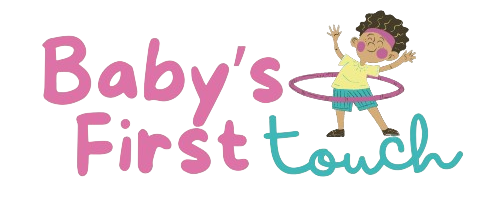Table of Contents
- Understanding Personality Disorders (and Why Diagnosis in Youth is Complex)
- Recognizing Potential Signs (Warning: This is NOT a Diagnostic Tool)
- The Crucial Role of Professional Assessment and Diagnosis
- Core Parenting Strategies: Building a More Stable Environment
- Therapeutic Approaches That Can Help
- Taking Care of YOU: The Oxygen Mask Principle
- Navigating the Wider World: School and Social Life
- A Message of Hope and Long-Term Perspective
- Conclusion: You Are Not Alone on This Journey
Navigating the Storm: A Compassionate Guide to Parenting Children with Personality Disorder Traits
Parenting is often described as the toughest job you’ll ever love. But when your child consistently displays challenging, intense, and confusing behaviors that go beyond typical developmental phases, the journey can feel less like navigating choppy waters and more like weathering a relentless hurricane. If you suspect your child might be exhibiting traits associated with a personality disorder, you likely feel overwhelmed, isolated, and perhaps even frightened. You’re not alone, and there is guidance available.
First, let’s take a deep breath. Understanding and addressing these challenges requires immense patience, professional support, and, crucially, compassion – both for your child and yourself. This article aims to be a guiding light, offering insights and practical strategies for parents navigating the complexities of raising a child with potential or emerging personality disorder traits.
It’s important to state upfront: formally diagnosing personality disorders in children and even adolescents is approached with extreme caution by mental health professionals. Personalities are still developing, and many intense behaviors might stem from other conditions like ADHD, anxiety, depression, trauma, or be part of a particularly difficult developmental stage. However, recognizing patterns and seeking early intervention for concerning traits is vital for your child’s long-term well-being and your family’s stability.

Understanding Personality Disorders (and Why Diagnosis in Youth is Complex)
Personality disorders (PDs) are enduring patterns of inner experience and behavior that deviate markedly from the expectations of the individual’s culture. These patterns are pervasive, inflexible, start in adolescence or early adulthood, are stable over time, and lead to distress or impairment. They affect how people think about themselves and others, how they manage emotions, how they relate to people, and how they control their impulses.
The Diagnostic and Statistical Manual of Mental Disorders (DSM-5) groups PDs into three clusters:
- Cluster A: Odd or eccentric behavior (e.g., Paranoid, Schizoid, Schizotypal PD).
- Cluster B: Dramatic, emotional, or erratic behavior (e.g., Antisocial, Borderline, Histrionic, Narcissistic PD). This cluster often presents the most significant parenting challenges due to behaviors like impulsivity, emotional instability, and disregard for rules or others’ feelings.
- Cluster C: Anxious or fearful behavior (e.g., Avoidant, Dependent, Obsessive-Compulsive PD).
Why the Hesitation with Diagnosing Children?
Clinicians are generally reluctant to diagnose PDs before age 18 because:
- Personality is Still Forming: Adolescence is a period of significant identity development and change. Behaviors seen now might not persist.
- Symptom Overlap: Many PD traits overlap with symptoms of other common childhood/adolescent disorders (like ADHD, ODD, Conduct Disorder, Bipolar Disorder, complex trauma).
- Stigma: A PD diagnosis carries significant stigma, which can be particularly damaging for a young person.
- Malleability: Young brains have more plasticity, meaning interventions have a greater chance of positively influencing development.
Instead of a formal PD diagnosis, professionals might identify specific traits, patterns, or diagnose conditions like Oppositional Defiant Disorder (ODD), Conduct Disorder (CD), or Disruptive Mood Dysregulation Disorder (DMDD), which can sometimes (but not always) be precursors or share features with later PDs, particularly Antisocial Personality Disorder. Sometimes, they might note ‘traits’ of a specific disorder, like Borderline Personality Disorder traits.
Recognizing Potential Signs (Warning: This is NOT a Diagnostic Tool)
If you’re reading this, you’re likely observing behaviors that cause significant concern. Remember, only a qualified mental health professional can diagnose. These are potential red flags that warrant professional evaluation, especially if they are persistent, pervasive across different settings (home, school), and cause significant distress or impairment:
Intense Emotional Dysregulation:
- Extreme mood swings that seem disproportionate to the situation.
- Difficulty calming down after being upset; rage episodes.
- Chronic feelings of emptiness or boredom.
- Intense, unstable relationships characterized by idealization (‘you’re the best!’) followed quickly by devaluation (‘I hate you!’).
Impulsivity:
- Acting without thinking of consequences (e.g., risky behaviors, substance use, impulsive spending, unsafe sex).
- Difficulty delaying gratification.
- Making rash decisions.
Interpersonal Difficulties:
- A pattern of unstable and intense relationships.
- Fear of abandonment (real or imagined), leading to frantic efforts to avoid it.
- Manipulative behaviors to get needs met.
- Lack of empathy or difficulty understanding others’ perspectives.
- Frequent conflicts with peers, family members, authority figures.
- A sense of entitlement or expecting special treatment (often seen with narcissistic traits).
Identity Disturbance:
- An unstable sense of self; frequently changing goals, values, opinions, or even appearance.
- Feeling unsure of who they are.
Antisocial Behaviors (Often linked to ODD/CD):
- Persistent lying or deceitfulness.
- Disregard for rules and social norms.
- Aggression towards people or animals.
- Destruction of property.
- Stealing.
- Lack of remorse for wrongdoing.
If these patterns resonate deeply, it’s time to seek professional help. Don’t rely on internet searches or self-diagnosis.
The Crucial Role of Professional Assessment and Diagnosis
Getting a comprehensive evaluation from a qualified child and adolescent psychiatrist or psychologist is the essential first step. This isn’t just about getting a label; it’s about understanding the root causes of the behavior and developing an effective treatment plan.
What Does Assessment Involve?
A thorough assessment typically includes:
- Detailed Interviews: Conversations with you (the parents/caregivers) and your child (separately and sometimes together).
- Behavioral Observations: Observing how your child interacts and behaves during sessions.
- Questionnaires/Rating Scales: Standardized tools completed by parents, teachers, and sometimes the child.
- Review of Records: School reports, previous evaluations, medical history.
- Ruling Out Other Conditions: Assessing for ADHD, anxiety, depression, learning disabilities, trauma history, substance use, or medical conditions that could explain the behaviors.
This process helps differentiate between typical adolescent turmoil, other mental health conditions, and potentially emerging personality disorder traits. An accurate understanding is key to effective intervention.

Core Parenting Strategies: Building a More Stable Environment
Parenting a child with these intense challenges requires a specific skill set, often different from mainstream parenting advice. Remember, consistency, structure, and calm are your anchors.
1. Prioritize Safety Above All Else
If your child’s behavior includes aggression, self-harm, or significant risk-taking, safety planning is paramount.
- Create a Safety Plan: Work with a therapist to develop a plan for managing crises, including de-escalation techniques, who to call for help, and steps to ensure the safety of everyone in the household.
- Secure Potential Hazards: Depending on the behaviors, this might mean securing sharp objects, medications, or access to substances.
- Set Firm Boundaries Around Aggression: Have clear, immediate, and non-negotiable consequences for physical aggression or property destruction. Ensure these consequences are about safety and stopping the behavior, not punitive punishment delivered in anger.
2. Embrace Consistency and Structure
Children struggling with emotional dysregulation and impulsivity thrive on predictability.
- Establish Clear Rules and Routines: Predictable schedules for meals, homework, chores, and bedtime reduce anxiety and potential triggers.
- Define Expectations and Consequences: Ensure rules are simple, clear, and consistently enforced. Consequences should be logical, immediate (when possible), and delivered calmly.
- Maintain a United Front: If you have a co-parent, it’s crucial to be on the same page regarding rules and consequences. Inconsistency can be exploited and undermines stability.
3. Validate Feelings, Not Harmful Behaviors
This is a cornerstone of approaches like Dialectical Behavior Therapy (DBT). Validation means acknowledging that your child’s feelings are real *to them*, even if their reaction seems extreme or their perception is distorted. It doesn’t mean you agree with their behavior.
- Reflect Their Feelings: “I can see you’re incredibly angry right now.” “It sounds like you felt really hurt when that happened.”
- Separate Feeling from Action: “It’s okay to feel angry, but it’s not okay to hit.” “I understand you felt rejected, but running away isn’t safe.”
- Avoid Arguments About ‘Reality’: When emotions are high, arguing about who is right or wrong is counterproductive. Focus on validating the emotion first.
4. Master Effective Communication
Communication can easily break down. Focus on calm, clear, and respectful interaction, even when it’s difficult.
- Use “I” Statements: Instead of “You always yell,” try “I feel overwhelmed when there’s shouting.”
- Practice Active Listening: Pay attention, nod, reflect what you hear (“So, you’re saying you felt ignored?”) before responding.
- Keep it Simple and Direct: Especially during conflict, avoid lengthy explanations or lectures.
- Choose Your Timing: Address difficult issues when things are calm, not in the heat of the moment.
- Model Calmness: Your calm presence can help de-escalate a situation. Take deep breaths yourself. If needed, take a break: “I need a few minutes to calm down before we continue this conversation.”
5. Teach and Support Emotional Regulation
Children with these traits often lack the skills to manage intense emotions.
- Co-Regulation (Especially for Younger Children): Offer calm physical presence, soothing words, or distraction during meltdowns.
- Teach Coping Skills: Introduce techniques like deep breathing, mindfulness exercises, taking a break, listening to music, physical activity, or journaling *when they are calm*.
- Create a ‘Calm-Down Space’: Designate a safe, comfortable area where your child can go to regulate when feeling overwhelmed.
- Identify Triggers: Help your child recognize situations or feelings that often lead to outbursts.
6. Set Realistic Expectations
Change takes time, and progress often isn’t linear. Expecting immediate turnarounds sets everyone up for disappointment.
- Focus on Progress, Not Perfection: Acknowledge small steps in the right direction.
- Understand Limitations: Recognize that some behaviors stem from genuine skill deficits (e.g., poor impulse control, difficulty seeing others’ perspectives) rather than willful defiance.
- Adjust Your Definition of Success: Success might be a shorter outburst, using a coping skill once, or communicating a feeling verbally instead of acting out.
7. Encourage Prosocial Behavior
Actively reinforce positive actions.
- Catch Them Being Good: Offer specific praise for effort, kindness, cooperation, or using coping skills. “I really appreciate you telling me you were angry instead of slamming the door.”
- Model Empathy and Respect: Children learn by watching. Demonstrate the behaviors you want to see in your interactions with them and others.
- Provide Opportunities for Success: Encourage involvement in activities where they can build skills and experience positive social interactions.
8. Build Self-Esteem Authentically
While crucial, this needs careful handling, especially if narcissistic traits are present.
- Focus on Effort and Skill Development: Praise genuine effort and specific skills learned, rather than generic praise (“You’re so smart”).
- Avoid Empty Flattery: This can feed into entitlement. Focus on character strengths like persistence, kindness (when shown), or problem-solving attempts.
- Encourage Competence: Help them find activities where they can develop real skills and feel genuinely capable.
Therapeutic Approaches That Can Help
Parenting strategies are most effective when combined with appropriate therapy for the child and often, the family.
- Dialectical Behavior Therapy (DBT): Originally developed for Borderline Personality Disorder, DBT skills are highly effective for emotional dysregulation, impulsivity, and interpersonal difficulties. There are adapted DBT programs for adolescents. Key components include mindfulness, distress tolerance, emotion regulation, and interpersonal effectiveness.
- Cognitive Behavioral Therapy (CBT): Helps identify and change negative thought patterns and behaviors. Useful for addressing distorted thinking, anxiety, and depression that often co-occur.
- Family Therapy: Crucial for improving communication patterns, setting boundaries, resolving conflicts, and helping the family function better as a unit.
- Parent Management Training (PMT): Equips parents with specific techniques to manage challenging behaviors effectively (like those used in ODD/CD treatment).
- Medication: While there’s no specific medication for personality disorders themselves, medication might be prescribed by a psychiatrist to treat co-occurring conditions like depression, anxiety, ADHD, or severe mood instability/aggression.

Taking Care of YOU: The Oxygen Mask Principle
You cannot pour from an empty cup. Parenting a child with intense needs is exhausting – physically, mentally, and emotionally. Prioritizing your own well-being isn’t selfish; it’s essential for survival and for being the effective parent your child needs.
Seek Your Own Support:
- Therapy for You: A therapist can provide coping strategies, emotional support, and a non-judgmental space to process your experiences.
- Parent Support Groups: Connecting with other parents facing similar challenges can reduce isolation and provide practical tips. Look for groups specifically for parents of children with mental health or behavioral challenges (e.g., through NAMI – National Alliance on Mental Illness).
- Lean on Trusted Friends/Family: Confide in supportive people who listen without judgment.
Manage Stress and Avoid Burnout:
- Schedule Breaks: Even short breaks during the day can help. Ensure you have time for activities you enjoy.
- Practice Self-Care: Prioritize sleep, nutrition, and exercise. Engage in stress-reducing activities like mindfulness, yoga, or hobbies.
- Set Boundaries: It’s okay to say no to extra commitments. Protect your time and energy.
- Recognize Burnout Signs: Chronic exhaustion, cynicism, detachment, feeling ineffective. If you see these signs, seek help immediately.
Release Guilt and Blame:
- It’s Not Your Fault: Personality development is complex, involving genetics, temperament, and environment. While parenting plays a role, it’s rarely the sole cause of these deep-seated patterns.
- Avoid Blaming the Child: Remember they are often struggling with intense internal pain and skill deficits, even if their behavior is hurtful. Focus on the behavior and the underlying need, not on labeling the child as ‘bad’.
Navigating the Wider World: School and Social Life
These challenges often extend beyond the home.
- School Collaboration: Work closely with the school. Share relevant information from therapists (with consent). Advocate for appropriate support, potentially including an Individualized Education Program (IEP) or 504 plan if needed.
- Educate Key People: Inform trusted family members, coaches, or activity leaders about helpful strategies (without oversharing sensitive diagnostic details).
- Manage Social Difficulties: Help your child navigate peer relationships, which can be fraught. Role-playing social scenarios might be helpful. Be prepared for social setbacks.
A Message of Hope and Long-Term Perspective
Hearing about personality disorders can sound daunting, even terrifying. But it’s crucial to remember that early intervention significantly improves outcomes. While these patterns are defined as ‘enduring’, a young person’s brain is still developing, and therapeutic intervention can make a real difference in shaping a healthier trajectory.
Focus on:
- Building Skills: Treatment and consistent parenting help build crucial life skills in emotional regulation, communication, and problem-solving.
- Strengths: Identify and nurture your child’s strengths and interests.
- The Long Game: This is a marathon, not a sprint. There will be good days and bad days. Celebrate progress, however small.
- Your Relationship: Despite the challenges, find moments for positive connection. Let your child know you love them, even when you don’t love their behavior.

Conclusion: You Are Not Alone on This Journey
Parenting a child exhibiting traits associated with a personality disorder is an incredibly demanding path, requiring extraordinary resilience, patience, and love. While the diagnostic landscape for youth is complex, recognizing concerning patterns and seeking professional help early is paramount. Implementing consistent, structured, and validating parenting strategies, informed by therapeutic approaches like DBT and CBT, can create a more stable environment for growth.
Crucially, remember to prioritize your own well-being. Seek support, manage stress, and practice self-compassion. You are your child’s anchor in the storm, and taking care of yourself ensures you have the strength to navigate the waves. While the journey is challenging, early intervention, effective strategies, and unwavering (though boundaries) love offer genuine hope for improvement and a better future for your child and your family.
If you are concerned about your child’s behavior, please reach out to a qualified mental health professional specializing in child and adolescent assessment and treatment. They can provide the accurate diagnosis and tailored guidance your family needs.



